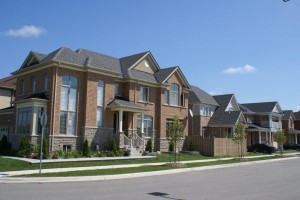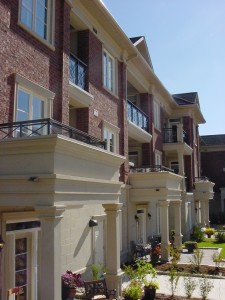Sound will play a key role in the coming decade as the economic reality of smaller lot sizes, government rules forcing intensification, as well as the increasing prevalence of attached homes and condominiums means that the need for effective sound barriers from neighbours and neighbourhood noise will only increase.
Compounding the issue within single-family neighbourhoods is the absence of any type of ‘condo rules’ that impose sound restrictions and the fact that police have little time to enforce noise complaints.
For condo owners, especially in high-density urban areas, not only can neighbours be a problem, but the ongoing clamour of outside noise too creeps into your home through walls, windows, doors and cracks.

“When it comes to smaller lots, the problems will always be ‘the neighbours’.”
Don Campbell, Canadian Real Estate Expert

Federal, provincial and municipal governments all have standards for levels of acceptable sound, but they can be next to impossible to enforce, without pin-pointing a specific source.
Outside airborne sounds reach the ear on the inside of a dwelling by entering through roofs, doors, cracks, windows, floors and walls. Impact sound, on the other hand, results from foot traffic, dropped or sliding objects and travels through construction materials, primarily floors and ceilings. The “sound insulation” of a wall is that property which enables it to resist the passage of noise or sound from one side to the other. According to MasonryWorx President Jack Prazeres: “The rule of thumb in wall sound insulation is simply the denser the product the better the sound insulation.” In contrast, “sound absorption” is that property of a material that permits sound waves to be absorbed into a wall, reducing noise levels by eliminating echoes or reverberations.
Masonry products – block, brick and stone – perform exceptionally well in blocking low-frequency, airborne noise such as plumbing, heating and air conditioning systems, elevators, amplified music, traffic and aircraft. For multi-units buildings concrete block dividing walls can significantly reduce noise from neighbouring units as do concrete and block floors and ceilings. The Ontario Building Code mandates that mid and high-rise condos use masonry or concrete for dividing walls and floors for fire-safety; but in low-rise condos (4-storeys or under) and townhouses, using masonry or other high STC rated dividing walls and floors can reduce both outside and neighbour noise more than light construction materials.
To read more on masonry and soundproofing your home, check out Building Peace and Quiet into Your Home.